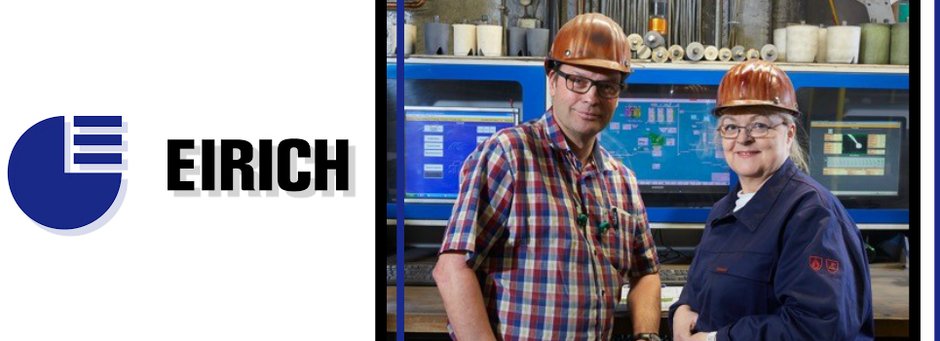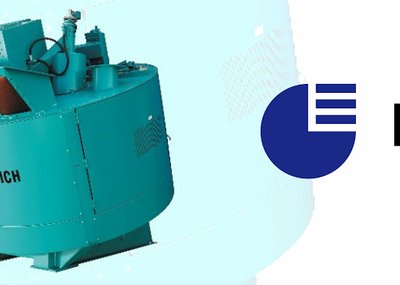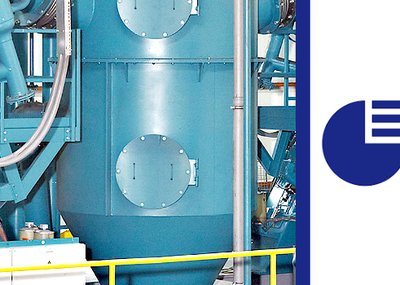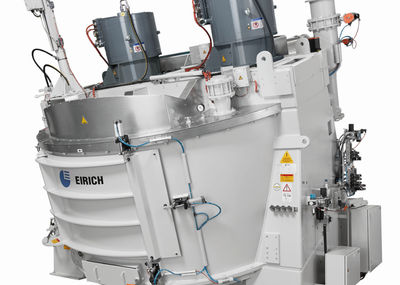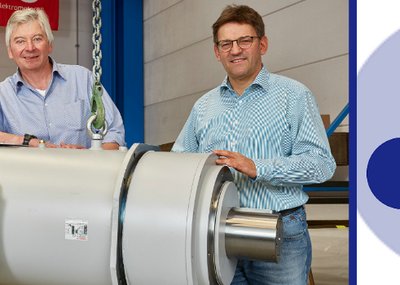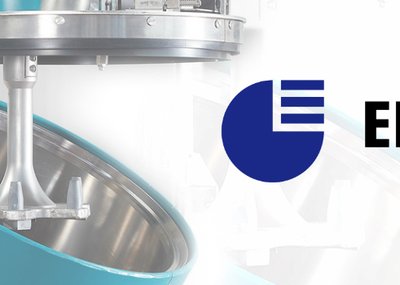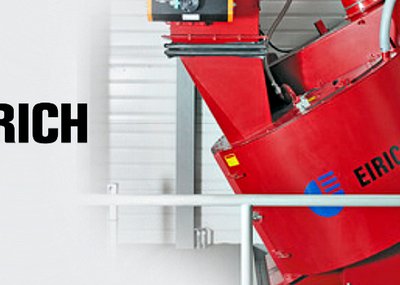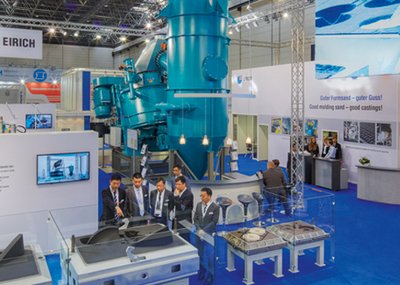About 25 percent less rejects, a major improvement in surface quality with more than 50 percent less refinishing and significantly more stable processes - Thomas Poggemann, production manager at Juergens Gießerei GmbH & Co. KG, is more than satisfied. The newly built line for molding material preparation with second-hand equipment, control system and AT1 inline tester of Maschinenfabrik Gustav EIRICH GmbH & Co. KG pays off. For two and a half years now, the SandExpert software solution has been used to run the molding material preparation via the database of molds, without human intervention. A clear advantage for frequent mold changes on two molding lines and increasingly complex castings.
Perfection as the driving force - this is the declared motto of the Juergens Foundry. This includes optimally synchronized production processes that are continuously improved and adapted to the specific profile of requirements. A good example is the old line for molding material preparation with a muller mixer. Since 2012, it no longer met the requirements of the foundry specializing in gray cast iron and nodular cast iron.
EIRICH molding material preparation - turning old into new
Thomas Poggemann, production manager at the Juergens Foundry in Emsdetten, remembers: "We were thinking of expanding the bin capacities when we stumbled across a 2 to 3-year-old EIRICH molding material preparation line with a Webac cooler. We were able to purchase the equipment from the insolvency assets of a foundry in southern Germany. This was a real stroke of luck."
Juergens decided to build a new workshop, which was seamlessly connected to the second-hand sand preparation line in tower design with all central system components. With Maschinenfabrik Gustav EIRICH, a competent partner was found who carried out the detailed engineering and assembly of the machine technology, as well as the steel construction including the enclosure. The scope of supply also included the complete control system and an AT1 inline tester for automatically measuring compactability and shear strength. Juergens implemented the conveyor technology with VHV Anlagenbau. Preventive molding material control was implemented with the EIRICH SandExpert software for continuous recording and analysis of batch data. The control solution and quality package together establish the basis for implementing molding material preparation without human intervention, despite challenging conditions. A challenging task given the broad portfolio of castings.
Operating mode based on the database of molds
Juergens manufactures molding boxes (molds) for currently around 4,500 different castings with two HWS molding lines, both using the Seiatsu molding process. The casting weight of the small molding line is between 20 and 140 kilograms of molten iron, while that of the large molding line is between 100 and 1,000 kilograms. Both molding lines run in parallel. At the same time, two completely different castings are being produced.
"The molding material must work for both molds, even though the iron-sand ratio is quite different", says Thomas Poggemann. Manually calculating the best molding material recipe involved much time and effort considering the frequent changes of mold. Today, the molding material preparation is programmed for each specific mold and processing is fully automated. "This operating mode requires a lot of preparatory work, which Thomas Poggemann and his team have done excellently. Box weight, box size, molten iron, desired bentonite content, desired compressive strength, compactability, core destruction - all this was meticulously documented for each and every mold", confirms Klaus-Dieter Knapp with appreciation. He is supporting the Juergens Foundry as an EIRICH service technician and was already involved in the planning and design phase.
Target: homogeneous return sand
When the mold is changed on a molding line, the software automatically calculates the composition of the molding material. This is done using the values from the database of molds, so that the return sand quality remains identical regardless of the castings produced. The return sand of the new batch is refreshed with just as much bentonite and additives as it will lose during the following casting process. Why? Production manager Thomas Poggemann puts it in a nutshell: "It is quite simple: return sand okay, feed materials okay, castings okay."
Pre-water for best mold material quality
The EIRICH control system offers two options for running the mixer: with and without pre-water. Juergens uses pre-water to achieve the longest possible processing time with water in order to shorten the total batch times. A large portion of the total water required for the previous batch is added to the mixer. During the mixing time, the probe in the mixer measures temperature and moisture content and automatically meters the additional water required. In the next step, the compactability is measured with the AT1 to determine the correction factor required for calculating the amount of water for the next mixture. Any moisture losses during transport are, of course, taken into account.
Preventive mold material controlling through interlinked processes
The AT1 inline tester is mounted directly downstream of the mixer on the belt conveyor and equipped with an independent local control unit. While the mixer is discharging, the AT1 inline tester analyzes three or two samples from each batch for compactability and shear strength. The measured actual values are transmitted to the process control system via an interface and used for automatically correcting the next batch.
As a quality assurance measure, Thomas Poggemann merely takes a molding material sample once a day and checks the moisture content, compactability, shear strength, double shear strength, splitting strength, compressive strength, gas permeability and bulk density. He finds, "The processes have become much more stable since we have run the molding material preparation via the database of molds, without human intervention."
Benefits from molding material preparation with EIRICH equipment
Moreover, it is not just that: Due to the improvements in the field of molding material preparation, Juergens was able to reduce scrap by around 25 percent. In addition, the surfaces achieved show extremely improved properties. The need for refinishing has been drastically reduced - by more than 50 percent.
In Emsdetten, they have also implemented an operating mode with break times, which contributes significantly to saving energy. During the half-hour breaks when the molding lines are not producing, the machinery of the sand preparation system switches to the break mode. This occurs in a controlled, monitored and fully automated manner. The mixer switches off first, after the last batch has been completely discharged. Then the cooler follows, which also switches off only after it has been completely discharged. Finally, the conveyor belts are shut down.
Everything in full view at all times
All monitors along the processing chain allow the graphical display of the actual conditions within the cycle of molding material preparation, as well as the batch and consumption logs. On each of the screens, the operating staff can view the actual condition and quality of the molding material. When messages are displayed, the operator decides how to proceed and which measures to take. However, full access, for example to the sand recipe, is restricted to the shift manager in the control room and, in addition, the production manager via his personal monitor. By means of the teleservice function, EIRICH is also able to access the visualization and control system, as well as the current data, at any time. "There is always someone available when needed; that is helpful," says Thomas Poggemann. He appreciates that the time spent on repairs and stoppages can thus be reduced to a minimum.
Investing in the future
“At Juergens, we are digitally focused and always innovative. We are well aware that castings will become increasingly complex and sophisticated in the future," says Thomas Poggemann. As a railway-certified foundry for small and medium series of high quality for all industries - except automotive - the Juergens Foundry is excellently positioned to meet the challenges of the future. "With the automated molding material preparation using an EIRICH mixer and the quality package with the AT1 inline tester plus SandExpert software for preventive molding sand control, we have taken another step in the right direction," adds production manager Poggemann. As the next measures, he plans to renew the melting line and equip the large molding line with additional 40 molding boxes.
As far as molding sand preparation is concerned, nothing stands in the way of these plans. Even so, Thomas Poggemann promises that at Gifa 2019 he will take a closer look at the possibilities offered by the new generation of the AT1 inline tester with web interface and new measuring options. After all, there might be room to improve molding material preparation a little further.

